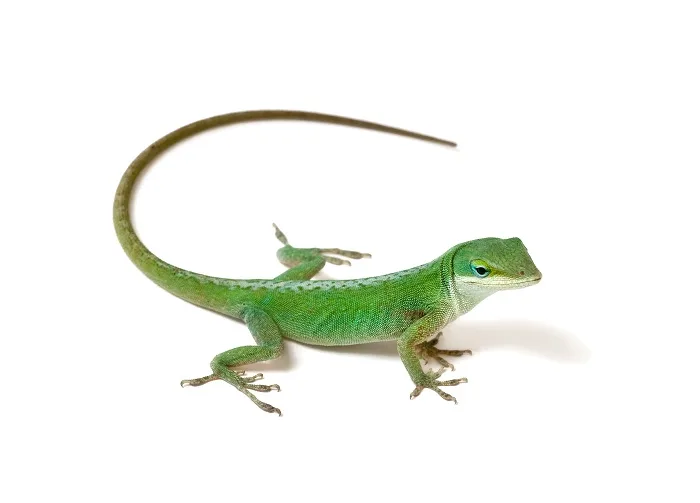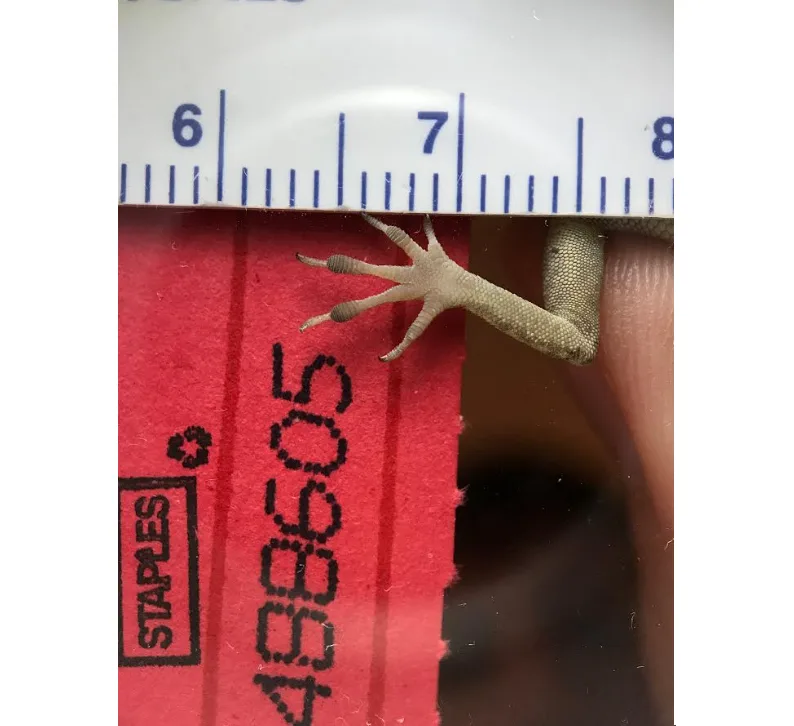
Study shows lizards are evolving to withstand hurricanes
In a hurricane-prone area, a good grip can be the difference between life and death.
Lizards that live in hurricane-prone areas have larger toepads than lizards in other parts of the world, according to a study from Washington University in St. Louis.
Scientists have known for some time that lizards in the Caribbean have larger toe pads than other species, but this is the first study to link the physical difference to an evolutionary response to hurricanes.
The larger toepads provide lizards with a better grip so they can avoid being swept away by strong winds and torrential rain.
Researchers used 70 years of hurricane data and studied hundreds of species of lizards to form their conclusion.

Courtesy: Colin Donihue.
Previously, it was believed hurricanes happen too infrequently to influence evolutionary processes.
"What we found is that hurricanes actually do have evolutionary effects on lizards that span both geographic and phylogenetic scales," Colin Donihue, a postdoctoral fellow in biology in Arts & Sciences at Washington University and the study's lead author, said in a statement.
"We showed that hurricanes affect a single anole species in Turks & Caicos, and those effects are likely inherited to the next generation -- suggesting an evolutionary change. The effects are paralleled across 12 island populations of a different anole species, and ultimately can be detected across an entire genus of very distantly related anole lizards."
'HURRICANE EFFECT' BROADER THAN PREVIOUSLY ANTICIPATED
Jonathan Losos, a professor at Washington University and a contributor to the paper, says he was initially skeptical hurricanes could have such a long-lasting impact on lizard populations.
"We poked and prodded the data every which way to try to find if there were any holes in it," Losos added. "And I'm convinced that it's robust."
In 2017, Donihue and his team detailed a survey of Anolis lizards in Turks & Caicos for another research project when Hurricane Irma struck the area with winds around 273 kph. Two weeks later, Hurricane Maria also hit the area.
Before-and-after comparisons demonstrated the lizards that survived the hurricanes had "different physical traits than the general population before the storms," the researchers say in a statement.
That prompted Donihue and his colleagues to return to Turks & Caicos to take new measurements, discovering that lizards in the next generation had toepads similar in size to the lizards found immediately after the hurricanes.
"The changes we saw were very fast - the span of the two hurricanes," Donihue tells The Weather Network in an email.
"We measured and then remeasured the populations 6 weeks apart and that's when we first noticed the difference. We revisited one year later to look at the next generation and we found that those same differences had been passed along to the offspring. So that's the timescale we were talking about."
Donihue says he was surprised by the results.
"Going back after the hurricanes we weren't sure what we'd find - whether there'd be any lizards left on the islands or whether there would be any change in the populations from the hurricane. We had a lot of questions and I was a bit skeptical, but we had a unique opportunity to ask the question so we decided to go down there and investigate. And I'm glad we did."
A 3-PART DISCOVERY
The findings are remarkable for several reasons. For starters, they may have implications for other animals and how they adapt to severe weather events and climate change.
"The first discovery [outlined in the paper] was that the hurricanes had been agents of natural selection," Donihue tells The Weather Network.
"There were some lizards that were better able to survive the storm and those lizards had a bunch of characteristics, like [larger] toepads and arm and leg length, that seemed to make sense in the context of the storm.
The next was that the differences were maintained in the next generation. This is important because it means that the hurricanes affected evolution.
Finally, the pattern of hurricane effects on lizard toepads transcended scales - this is a major driver of the diversity of toepads of almost 200 species of lizards that we measured."
Donihue hopes his paper will inspire an analysis of old data to see if hurricanes are also affecting the way other living things, like foliage or insects.
Thumbnail image courtesy: Getty Images.











